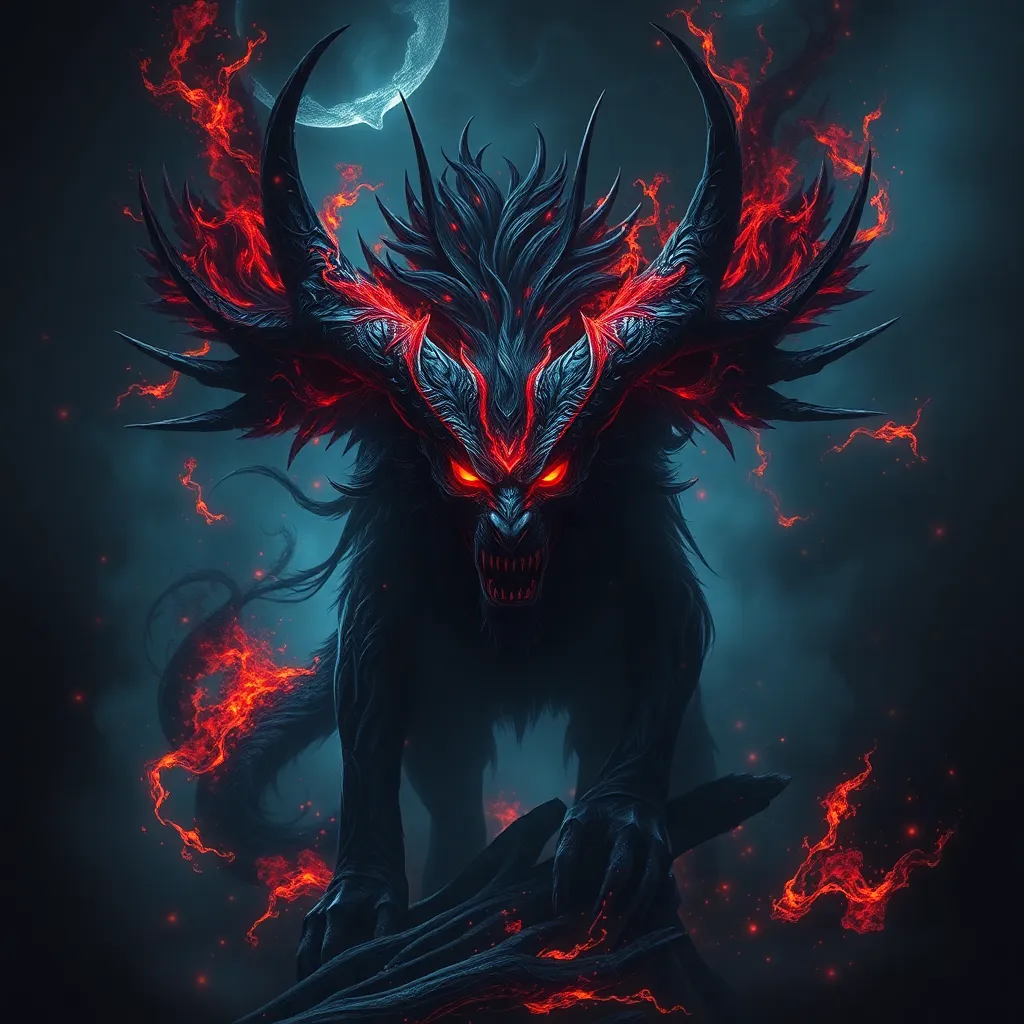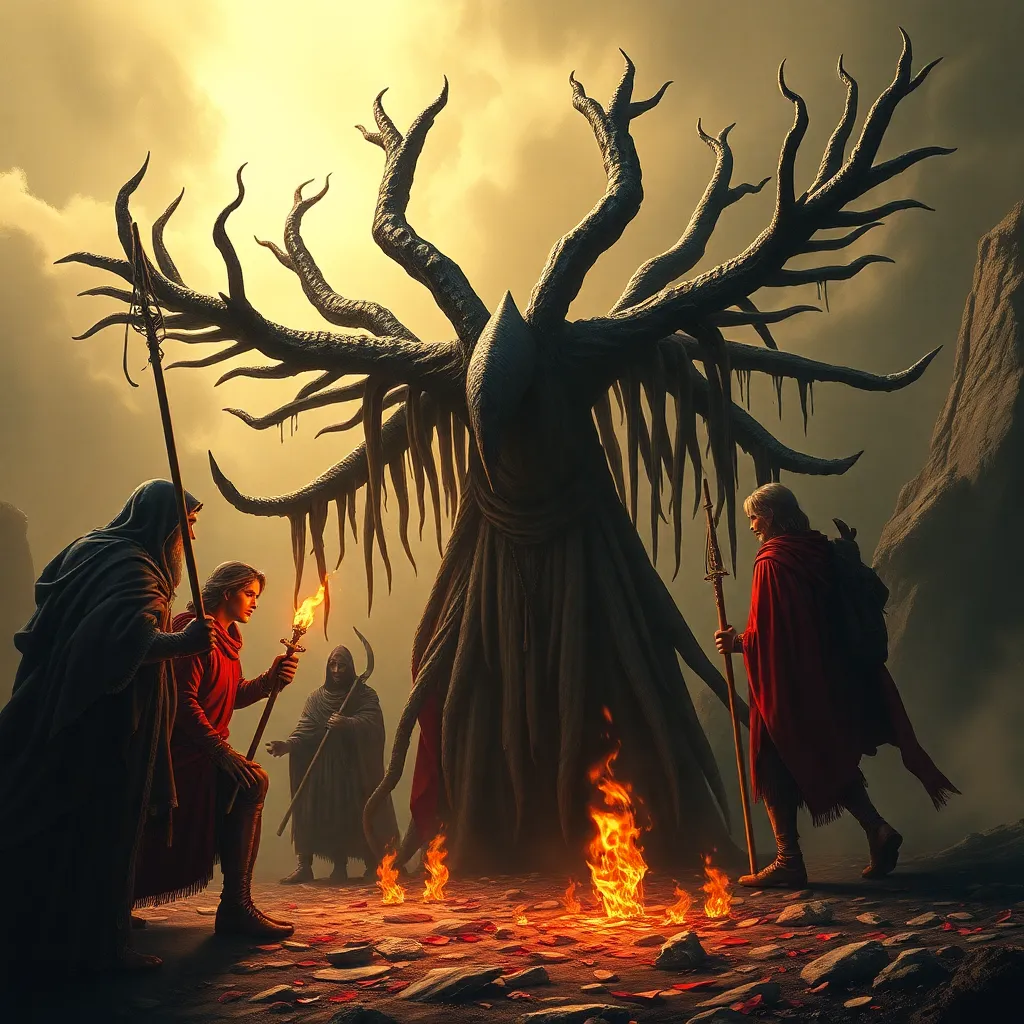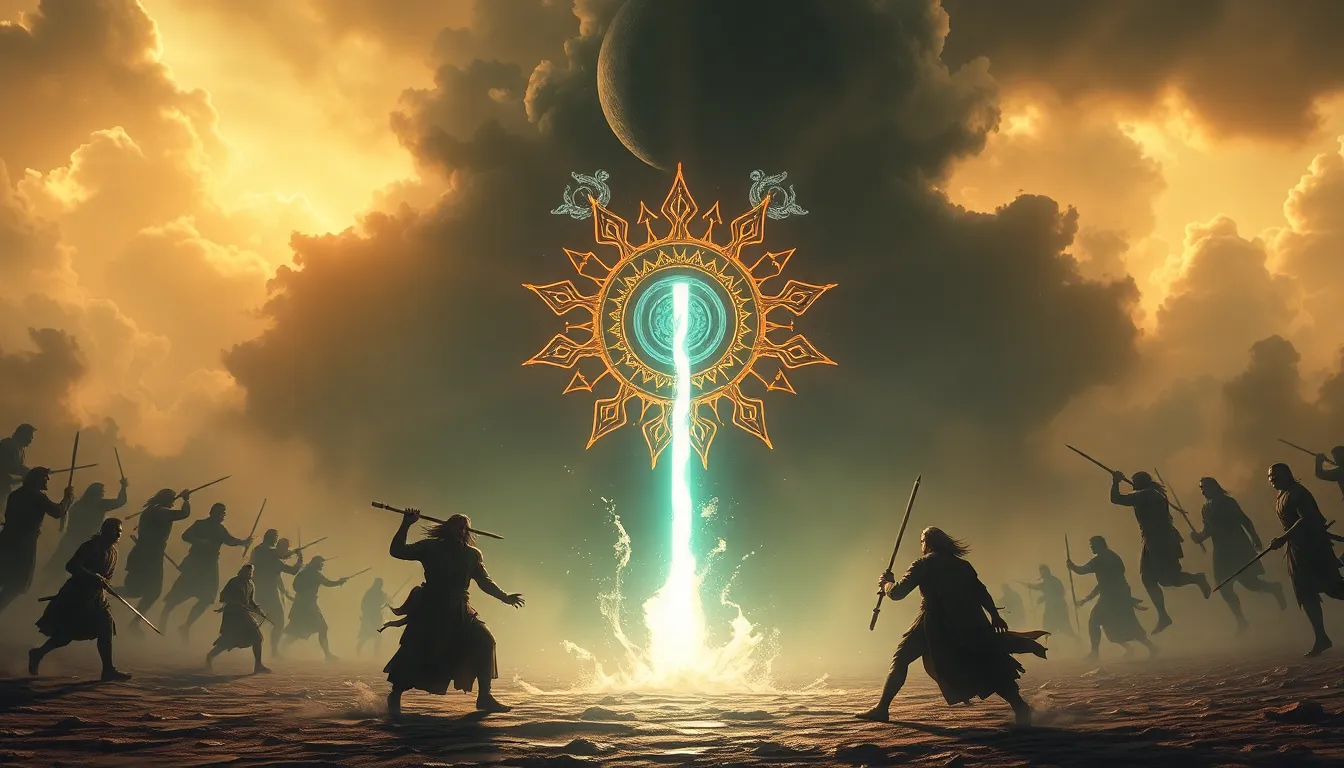The Dark Side of Creation: Fenrir as a Representation of Chaos and Destruction
I. Introduction
In Norse mythology, Fenrir is one of the most compelling figures, embodying the tension between creation and destruction. Born of the trickster god Loki and the giantess Angerboda, Fenrir is a wolf destined to play a pivotal role in the apocalyptic events of Ragnarok. This article explores the duality of creation and destruction as encapsulated in the figure of Fenrir, examining his significance as a symbol of chaos.
II. The Origins of Fenrir
Fenrir’s origins are steeped in the rich tapestry of Norse mythology, where lineage often dictates destiny.
A. Fenrir’s lineage: Loki and the giants
Fenrir is the offspring of Loki, the god known for his cunning and mischief, and Angerboda, a giantess. This parentage is significant, as it places Fenrir at the intersection of divine and chaotic forces, suggesting a being that embodies both order and disorder.
B. The prophecy surrounding Fenrir’s fate
According to prophecy, Fenrir is destined to bring about the downfall of the gods during Ragnarok. This prophetic vision sets the stage for his role as a figure of destruction, foreshadowing the chaos that will ensue.
C. The significance of his birth in the context of Norse creation myths
Fenrir’s existence is a reminder of the unpredictable nature of creation. While the gods sought to establish order in the cosmos, the birth of Fenrir signals that chaos is an intrinsic part of existence.
III. Fenrir’s Role in Norse Cosmology
In Norse cosmology, wolves symbolize various attributes, including ferocity, loyalty, and chaos.
A. The symbolism of wolves in mythology
- Wolves are often viewed as embodiments of primal instincts and the natural order of the wild.
- They represent the thin line between civilization and chaos.
B. The relationship between Fenrir and the gods
Fenrir’s relationship with the gods is complex. Initially, the gods attempted to bind him due to their fear of his potential for destruction. Each binding attempt failed until he was finally restrained by the magical chains forged by the dwarves, which were imbued with the essence of various elements. This act of binding was both a measure of safety and a symbol of the gods’ recognition of their own limitations in controlling chaos.
C. Fenrir as a harbinger of Ragnarok
As a harbinger of Ragnarok, Fenrir is more than just a figure of destruction; he represents the inevitability of chaos in the cyclical nature of existence. His eventual breaking free from his bonds heralds the end of the world as the gods know it.
IV. Chaos and Destruction: Fenrir’s Impact
Fenrir personifies chaos, illustrating the destructive power that can emerge when order is challenged.
A. The metaphor of Fenrir as chaos incarnate
Fenrir serves as a metaphor for chaos incarnate, a force that disrupts the established order. His very existence challenges the gods’ authority, representing the chaotic potential within all beings.
B. Destruction of order: The fall of the gods
During Ragnarok, Fenrir plays a crucial role in the destruction of the gods, ultimately devouring Odin, the chief of the gods. This act symbolizes the fall of order and the triumph of chaos over structured existence.
C. Fenrir’s connection to natural disasters and societal upheaval
Historically, Fenrir has been linked to natural disasters and societal upheaval. His imagery evokes the fear of uncontrollable forces, much like the chaos that arises during times of crisis in human society.
V. Fenrir in Literature and Art
Fenrir’s presence extends beyond mythology into literature and the arts, illustrating the enduring fascination with chaos.
A. Representation in ancient texts (e.g., Poetic Edda, Prose Edda)
The Poetic Edda and Prose Edda provide rich descriptions of Fenrir, detailing his lineage, prophecy, and role in Ragnarok. These texts serve as primary sources for understanding the character and significance of Fenrir in Norse culture.
B. Modern interpretations in literature and popular culture
- Fenrir has been featured in various modern adaptations, from novels to movies, often symbolizing the struggle against chaos.
- Contemporary interpretations explore themes of resistance, destruction, and the duality of nature.
C. Artistic depictions and their implications on the perception of chaos
Artists have depicted Fenrir in various forms, often emphasizing his monstrous size and ferocity. These depictions serve to reinforce the idea of chaos as an overwhelming force, challenging viewers to confront their own perceptions of order and disorder.
VI. Psychological and Cultural Interpretations
Fenrir’s narrative resonates on psychological and cultural levels, reflecting deeper human fears and desires.
A. Fenrir as a manifestation of the human psyche’s darker aspects
Fenrir embodies the darker aspects of the human psyche, representing the chaos and destruction that can emerge from unchecked emotions and desires. He serves as a reminder of the potential for inner turmoil and the consequences of ignoring these darker urges.
B. The archetype of the monster in folklore and its societal reflections
Monsters in folklore often reflect societal fears. Fenrir, as a monstrous figure, symbolizes the anxieties surrounding loss of control, the collapse of order, and the chaos that can arise within societies.
C. Fenrir’s relevance in contemporary discussions of chaos
In contemporary discourse, Fenrir’s story prompts discussions about the nature of chaos in modern life, from political upheaval to environmental crises, urging societies to confront the balance between order and chaos.
VII. The Balance of Creation and Destruction
Chaos and creation are interlinked, and Fenrir serves as a potent reminder of this relationship.
A. The necessity of chaos in the creative process
Chaos is often a precursor to creativity. Just as Fenrir’s destructive nature leads to the end of one era, it also paves the way for new beginnings and transformations.
B. Fenrir as a reminder of the balance between order and disorder
Fenrir embodies the idea that chaos is a necessary counterbalance to order. Without chaos, creation becomes stagnant, and without order, chaos spirals into destruction.
C. The cyclical nature of myth: Creation through destruction
Mythological narratives often highlight the cyclical nature of existence, where destruction begets creation. Fenrir’s role in Ragnarok exemplifies this cycle, demonstrating that from chaos can emerge new possibilities and forms of life.
VIII. Conclusion
In summary, Fenrir stands as a powerful symbol of chaos, illuminating the complexities of creation and destruction within mythology. His narrative encourages reflection on the nature of chaos and its implications for understanding both mythology and humanity. Ultimately, embracing chaos as part of the creative journey can lead to profound insights and transformations, reminding us that within destruction lies the potential for rebirth.



